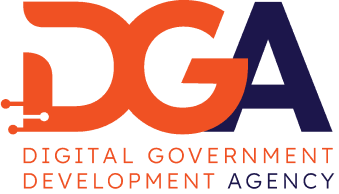EGA announced a new “Smart Government

EGA announced a new“Smart Government” era,
by upgrading several of government IT services to e-Services.
Electronic Government Agency (EGA) announced a new“Smart Government”era, by upgrading several of government IT services to e-Services, and highlighted 4 crucial missions to uplift the government services while cutting the Government budget by over Bt1bn annually. With its missions, it is a comprehensive roadmap, and expected to significantly change the face of the e-government standard in the next 4 years?
Group Captain Anudith Nakornthap, Minister of Information and Communications Technology (MICT), discloses that the objective of a “Smart Government” is to provide the better services to public. Given that in mind, Government needs to swiftly adjust itself, while maintaining its budget at a minimum. More importantly, it must choose technologies wisely with key focused placing on speed and standard platforms. As a result, EGA was set up in order to map out projects, which are expected to quickly and significantly changing the face of the e-Government Services at a minimum cost which are expected to connect and integrate two or more government agencies together, while speeding up service time in a concrete manner.
Going forward, the government’s numerous projects, e.g. nation-wide rice pledging scheme and etc., will become to electronic system with well interconnected and capabilities to serve both public and private sectors. And as more are expected from our electronics identification cards (ID), while several Government agencies to start accessing the nation-wide data base on electronics ID in 1H12; the ongoing EGA’s roadmap will be designed to spark aparadigm shift, where speed is at its heart and supportive regulations as well as policy cooperation in the surroundings.
Dr. Sak Segkhoonthod, President and CEO of Electronic Government Agency (Public Organization) or EGA reveals that the setting up of EGA as a public organization are to be in charge of the nation’s IT infrastructure as well as to manage IT projects pertaining to electronics government and to build up a standard platform for all government IT services. EGA was entrusted with 4 crucial missions to drive the Royal Thai Government to become a “Smart Government”. The 4 missions include (1) the building up of a network and knowledge base necessary for a smart government as well as the development of the state IT personnel, (2) the building up of basic infrastructure and key applications, e.g. the government data center and etc., (3) the upgrading of the e-Services and the integration of related back office so that interconnections between various governmental bodies and best-of-breed services are achieved, and (4) the building up of standard platform and necessary IT architectures in the government sector. The missions are in line with the ICT Ministry’s policy for swift change and at a minimum cost so that a systematic integration is achieved, leading to mass IT implementation and deployment among the public sector expected to save the government budget by no less than Bt1bn annually.
Among EGA’s top priorities are the buildings up of a solid and standardized Government Data Center capable to cater all data base systems. The Data Center will serve as a foundation forGovernment Cloud Service system, which will seamlessly integrate all government on-line services through network infrastructure, e.g. the Government Information Network 2.0 (GIN 2.0). Another task entrusted by the MICT to the EGA to expedite speedy and successful completion so that it becomes a prime option in the building up of other network systems. Next is the government’s IT security maintenance through Government Security Monitoring (GovMon) network infrastructure, where the EGA is asked to develop a Government Nervous System (GNS) to continually follow up on all status of the electronics government aspects.
On top of these, there are other non-infrastructure priorities, which the EGA needs to implement in 2012, namely the building up of a government email system or MailGoThai, which is practical and easy to use in everyday life. The system is expected to keep all state personnel away from other aboard web-based email services. It will provide an ultimate email system to be available anywhere and anytime. Going parallelly with the email system, it is the building up ofan e-Government Portal to gather all services to both state personnel and the general public in the future – all of which is aimed to achieve a Paperless Government.
On a longer term mission, the EGA is requested to prepare the setting up of Government Certification Authority (GCA) in order to provide the government’s electronic work procedures necessary as a benchmark for the building up of the information security system. With that, EGA will need to act as a Project Management Office (PMO) in charge of the management works of all government’s infrastructure and common services. With service quality as the key, it is expected that a high level of confidence among the public sector will be achieved and quickly lead to the implementation of other IT applications. EGA will welcome and gather all comments made as a basis for service improvement while conducting further researching to form Service Level Agreements (SLAs) tailored to suit specific government needs. Given different SLAs, it is expected that EGA will be able to achieve its strength among the public sectors.
In the next 4 years, it is expected that EGA will achieve its prime targets, i.e. a full implementation of the government’s electronics document seamlessly intertwined in work procedures. The Government must be able to serve its people without requesting a copy of their ID or house registration. Directly accessing to smart ID must be made as well as information data must be interconnected on a standard platform. The government IT services must be procured on a pay-per-use basis through cloud computing with the government IT’s turnaround time to be reduced by 30%-50%. All government agencies must be able to entertain a work-at-home environment through efficient IT infrastructure, where the government’s related IT employees will transform their roles to either a Project Manager or a Management Information System (MIS) Manager. In addition, there must be a contingency plan rehearsal as a standard protocol in all governmental organizations.
Dr. Sak further adds that, in compliance with the MICT policy, EGA will also act as middleman to push through data connection of two or more Government agencies in 2012 so that standard connection and speed are concretely in place. Going forward, the government’s numerous projects, e.g. nation-wide rice pledging scheme and etc., will become to electronic system. More importantly, it is expected that people with electronics IDs will be able to utilize such card to its fullest capacity, while several government agencies start accessing the nation-wide data base on electronics ID in 1H12 and more than 10 state agencies being able to participate by the end of 2012.
Besides these, EGA will also act as academic affair department to conduct researches and set up new academic standards for the government to facilitate the building up of Government Enterprise Architecture as well as a new body of knowledge, which will help speeding up and leapfrog the government electronic services. With that, the ongoing EGA’s roadmap will be designed to spark aparadigm shift with speed as key driving to Smart Government and other Smart Agenda will be coming down the road.

